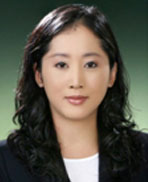Department of TESOL

Department of TESOL
When the world came face-to- face with the Covid19 crisis a year ago, we all had to quickly adjust to a “new normal” lifestyle. Among the many privileges that had to be placed on hold for the time being was the freedom to travel abroad. Many people enjoy traveling to a foreign country for different purposes. While some prefer relaxing in beautiful, serene environments near the ocean, others are more interested in visiting cultural, historical sites and getting to know the local culture and its people; regardless of travel styles and preferences, we all look forward to the day when we will be able to travel once again. There is, however, an alternative to physically traveling to a foreign country during this time; and in my opinion, a great way to temporarily escape from reality and immerse ourselves in a different historical period and an unfamiliar culture – reading a historical fiction. A historical fiction is a novel that situates its characters within a specific historical period and context in which a story unfolds during this time; despite the fictional characters and the story being told, however, the cultural, historical backdrop is oftenfactual. By reading a historical fiction, we can travel in “time and space” – in the comfort of our bedrooms, local café, on the subway, etc., – and get to know a new culture, its people, the social, political, historical factors that may have influenced the world in which we now live. Among the numerous historical fictions available, I would like to introduce three books: Number the Stars by Lois Lowry (low-intermediate level), The Kite Runner by Khaled Hosseini (high- intermediate/advanced level) and Pachinko by Min Jin Lee (advanced level).
Number the Stars is a story about a ten-year old girl named Anne Marie who lives in Copenhagen in 1943 during the Holocaust. Anne Marie’s best friend, Ellen, is Jewish and her parents must flee as soon as possible; however, they are unable to take Ellen with them and Anne Marie’s family allows Ellen to stay with them, placing the whole family in danger. The story is based on the Danish Resistance – a nationwide plan that helped the entire Jewish population in Denmark to successfully escape to Sweden during this time. The second book is The Kite Runner which takes place in Afghanistan and tells the story of a boy named Amir during the 1970s when the nation’s monarchy falls and becomes subject to Russian intervention. In addition to discovering the shocking events that subsequently lead to the rise of the Taliban regime, Amir tells a poignant story of what it means to forgive and to be forgiven – a universal theme that speaks to all of us, regardless of the cultural, historical context in which we live. Finally, Pachinko tells the story of Korean immigrants living in Japan during the 1900s when Korea was under Japanese occupation. Although most Koreans are familiar with the main historical events that took place during this time, Pachinko allows the reader to gain an intimate perspective to what it was like for Koreans living in Japan at the time.
We may not be able to travel to every part of the world in our life time but we can travel in time and space by reading. Indeed, reading a novel may not sound as exciting as traveling to a foreign country. However, the benefits of reading extensively are unsurpassable: improving language skills, developing critical thinking skills, gaining historical, cultural insights, developing a new perspective toward ourselves and the world around us, to name just a few; and perhaps more importantly, learning to be responsible global citizens as the world braces itself for the post-corona era and the emergence of the fourth industrial revolution – a critical period in which it is becoming increasingly important for us to discover what it means to be a “decent human being.”

